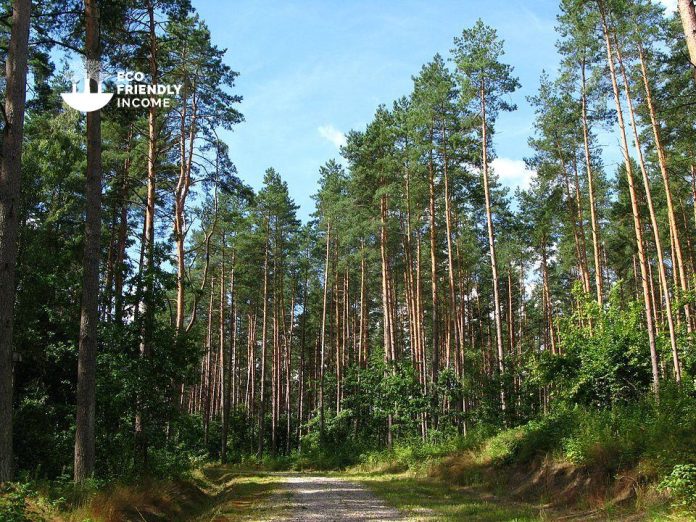
Featured Photo by Crusier / CC BY 3.0
A field guide on how to identify and propagate Scotch Pine (Pinus sylvestris), a hardy tree that is native to Eurasia.
How to Identify Scotch Pine (Pinus sylvestris)
Leaves
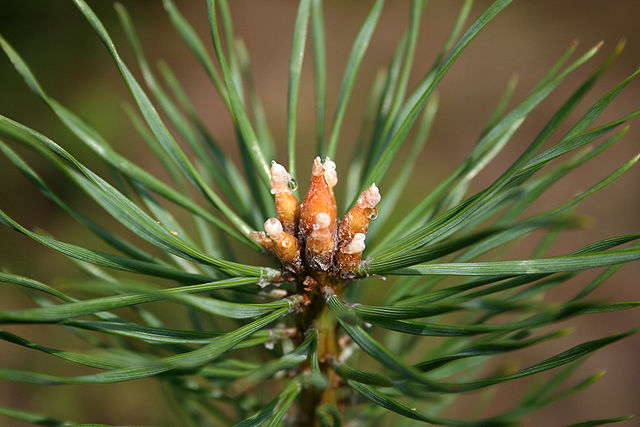
Scotch pine needles are linear-shaped, with entire margins (smooth). They grow from the stems in fascicle structures, in alternate arrangements.
Scotch pine has 2 needles per fascicle. If you take a close look at the long needles, they usually grow in a twisted way.
Bark
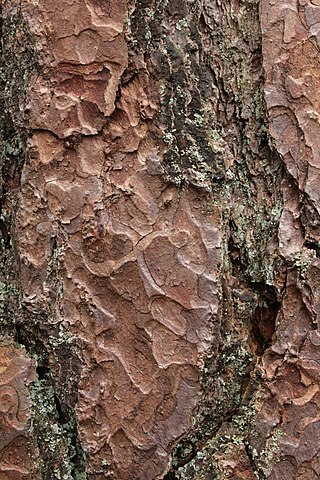
The Scotch Pine has bark that is thick and dark grey in the middle and bottom, but gets thinner and flakier towards the top, turning an orange color.
Older scotch pine trees show a near-bare orange bark in the upper 2/3rd of their trunk.
Cones
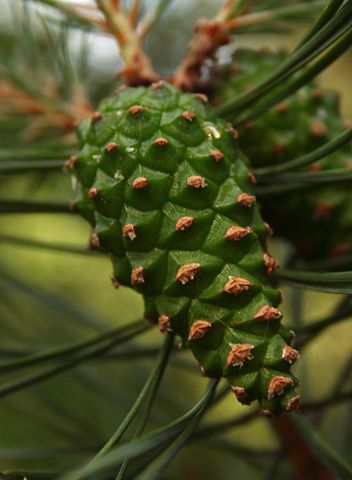
The cones are relatively small, usually measuring 1 to 1 and a half inches long, and they can stay on the branches for many years.
Flowering Season
In spring, yellow-orange cones grow in clusters on the ends of branches, these are the male cones.
In early summer, red-purple clusters form on the ends of branches, these are the female cones.
After being pollinated, the female cones turn into large, oval, yellow-green cones, which later turn grey-brown.
Habitat
The Scotch Pine is a tree that has been planted in many parts of the United States, especially in the Northeast, Lake States, Central States, and Pacific Northwest.
It is now considered to be a natural part of the landscape in some areas.
This tree is also found across southern Canada and is the most widely distributed pine in the world. It grows from Scotland all the way to the Pacific Ocean and from above the Arctic Circle to the Mediterranean.
It can also grow at sea level to about 2,440 meters high.
Some other understory plants that associate with Scotch pine are:
- Eastern Teaberry (Gaultheria procumbens)
- Sweetfern (Comptonia peregrina)
- Blueberry (Vaccinium myrtillus)
Wildlife Value
- Insects and lichens: They thrive in and around the cracks of the trunk.
- Birds: Golden eagles, goshawks, and ospreys use the branch for nesting materials and nesting sites.
- Mammals: Squirrels nest in the trees and eat the seeds from the cones.
How to Propagate Scotch Pine (Pinus sylvestris)

Hardiness Zone: 2-7

Soil Type: Acidic loam, sand.

Water: Normal to Low.

Exposure: Full Sun
You can propagate scotch pine with two effective methods:
- Stem Cuttings: It provides established trees faster, but is tricky, and will probably have a lower success rate.
- By Seed: The success rate is high but takes longer to get established saplings.
Both methods are worth a shot.
Let’s take a look:
How to Propagate Scotch Pine (Pinus sylvestris) by Seed
Seed is the easy and most effective way, all you need is to have access to scotch pine trees so that you can harvest them yourself.
If you don’t have any trees nearby, you can alternatively order seeds online.
A good place to order scotch pine seeds is Mount Royal Seeds.
How to Harvest Seeds
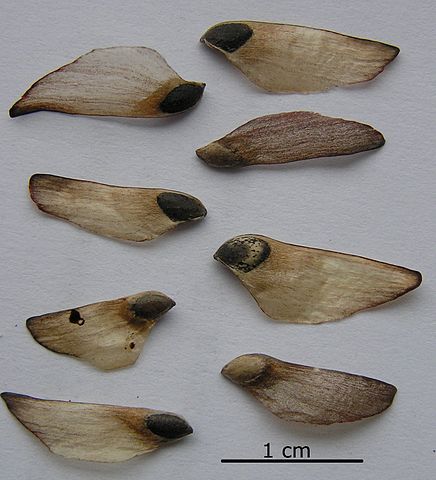
You can find the seeds inside the cones, it’s all about timing.
The best time to harvest scotch pine cones is roughly late summer to early fall.
By that time they will have matured enough to harvest the seeds inside.
Once you have cones, all you need to do is let them air dry. When they air dry, the cones will naturally open. Next, all you need to do is knock out winged seeds.
If the cones won’t open, you can place them in an oven at low temperatures to force them to open.
Stratification & Sowing
To stratify Scotch pine seeds, you’ll need to follow these steps:
- Take the seeds and put them in a labeled bag along with moist sand.
- Store the bag in the freezer for 3 weeks.
- Take the bag out of the freezer and let it sit in room temperature water for 12 hours.
- Put the bag in the refrigerator for another week.
- After the process, the seeds will be ready to be planted.
If you want to skip the stratification, you can either plant the seeds outside in the fall or harvest the cones mid-winter.
To grow the seeds indoors, you need to plant them in a moist peat moss medium, then cover them with a wrap.
In about a week, the seeds should start to grow.
How to Propagate Scotch Pine (Pinus sylvestris) by Cuttings
Another possible way to propagate Scotch pine is by taking cuttings. For this specific tree, hardwood cutting are your best option.
Very important: Take your cuttings only from young, healthy plants. Older trees lose their ability to regenerate over the years.
When you take hardwood cuttings from a scotch pine, you want to cut them after the first few hard frosts in fall or early spring when birches and maples begin to well.
Alternatively, cuttings during winter, while the tree is dormant, are also fine.
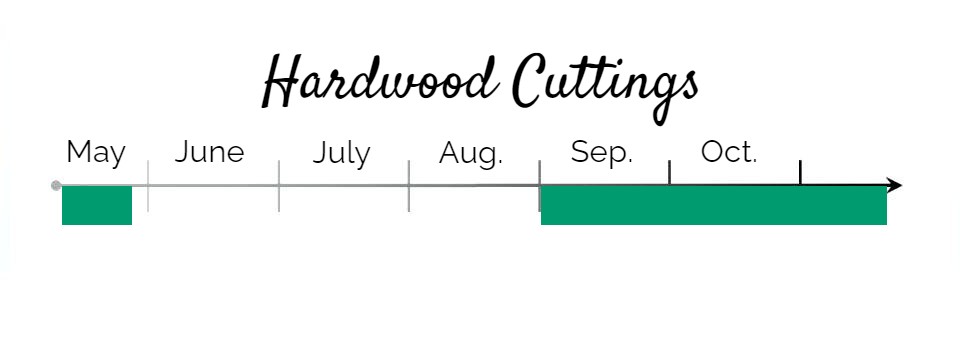
- First, take some cuttings off the main stem, really short at about 2-4 inches ea.
- Make sure the width of the cutting is not too thin, 1/4 inch width is fine, then cut or tear them with a heel*.
- Remove the needles from about half of the cutting.
- Lightly scuff the base of the cuttings to expose the cambium.
- Dip in rooting hormones and then plant into your sandy propagation beds.
- Keep watering the rooting medium, sand shouldn’t be too wet but it should stay moist.
Roots are slow and can take longer than 8 weeks to grow.
Scotch pine cuttings can benefit greatly from a 24h lighting period. Your medium should also drain very well to prevent fungus.
In general, the cuttings may take 2-3 weeks to form calluses at the ends, which is necessary for the roots to form.
It’s after about 3 weeks that roots should being to form, and won’t be ready to transplant for quite some time.
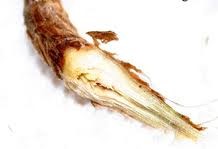
FAQ
Q: Is Scotch pine native to Ontario?
A: No, it was actually introduced into north America by European settlers.
Q: Why is Scots pine an invasive species?
A: The USDA defines invasive plants as non-native and able to take over plant communities and ecosystems. Scots pine is listed as invasive in Ontario, Canada, Michigan, and Wisconsin, but it is controlled not a great threat.
Q: Are Scots pine good for wildlife?
A: Scots pine helps sustain a diverse range of wildlife by providing important habitats. Its bark is home to lichen, which helps enrich the soil with nitrogen. When the lichen falls to the ground, it creates fertile soil that’s quickly covered with blueberries and cranberries.
Q: What are the advantages of Scots pine?
A: The wood from Scots pine trees is called “red deal” and is known for being sturdy and easy to work with. Although it’s not naturally resistant to decay, it can be treated with preservatives to increase its durability.
